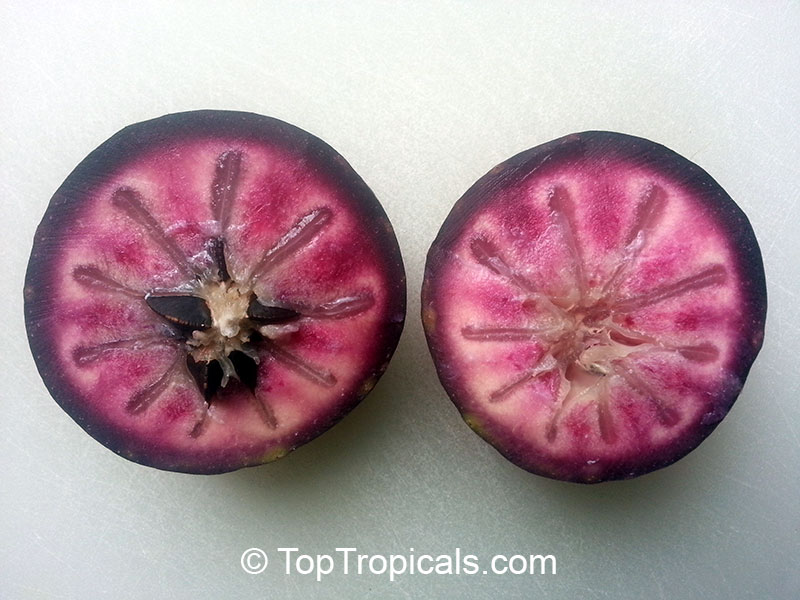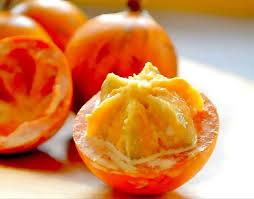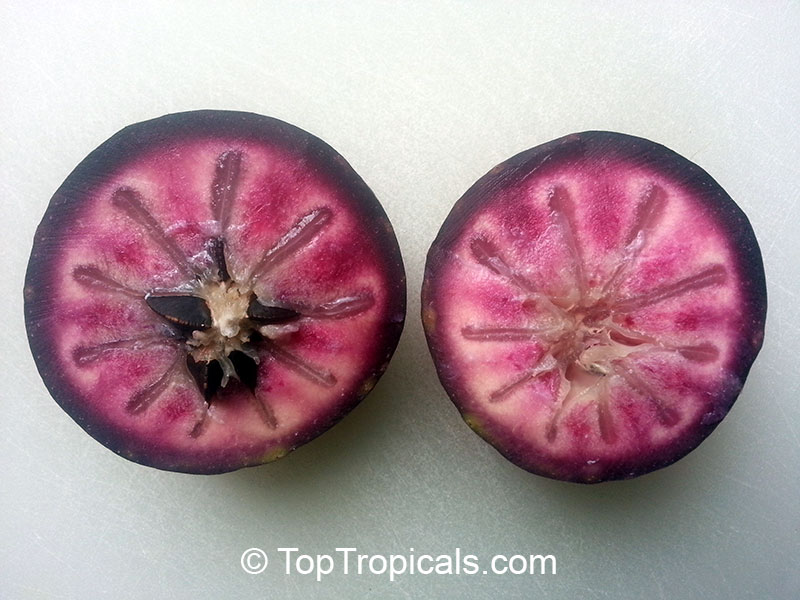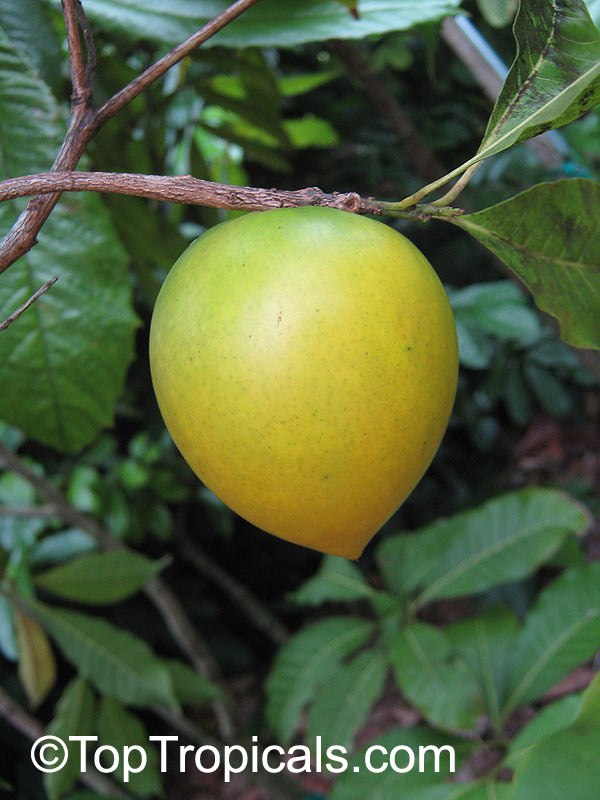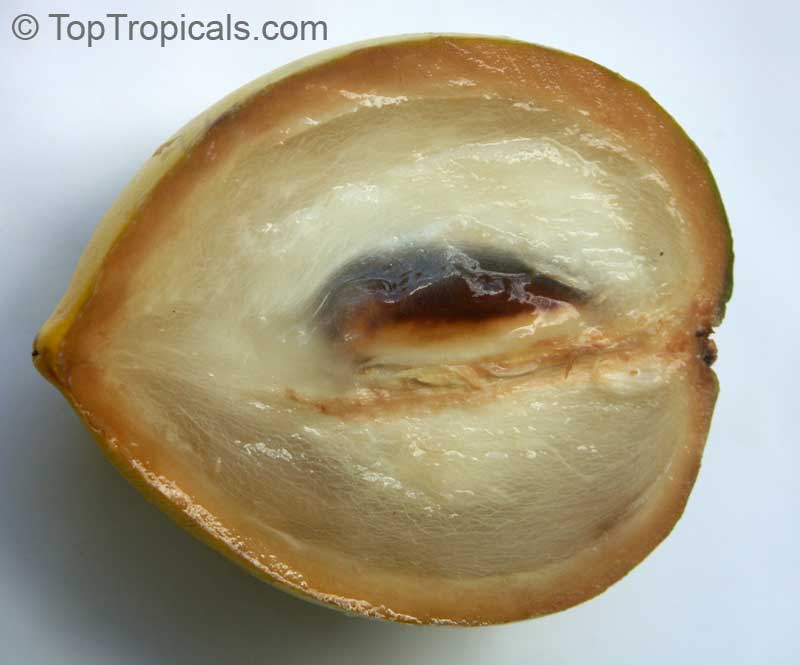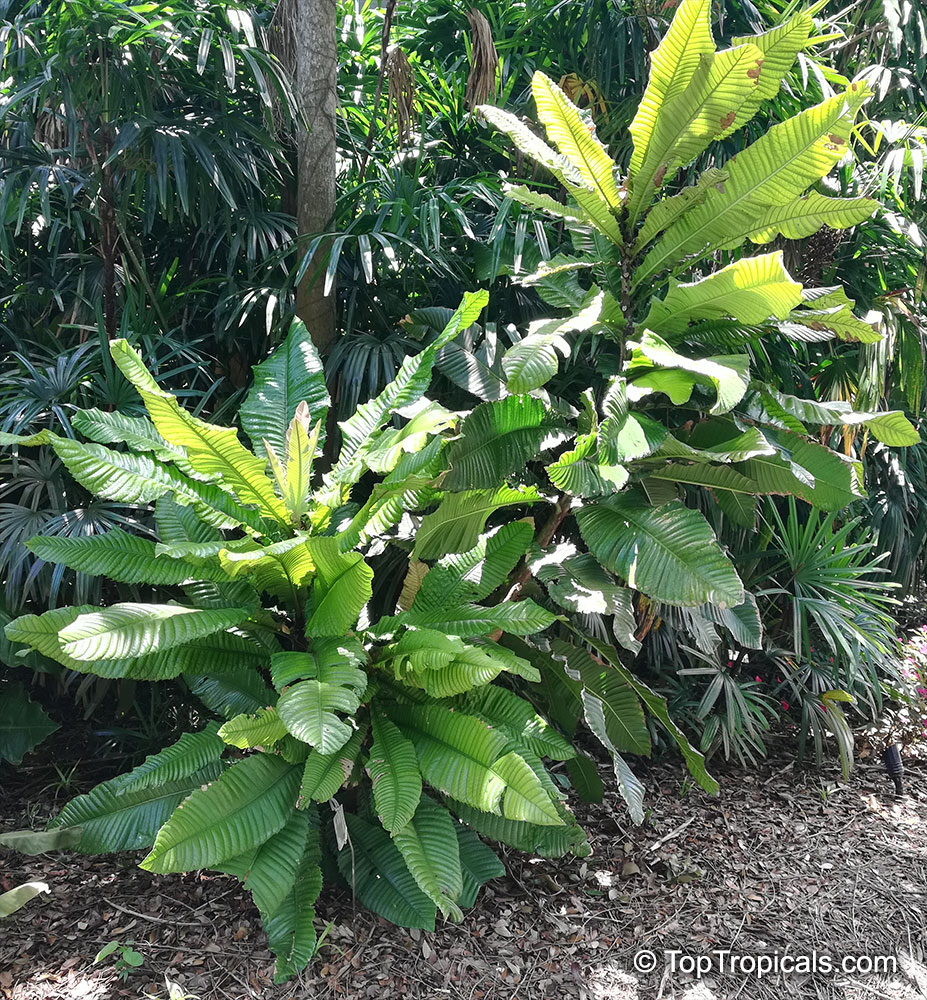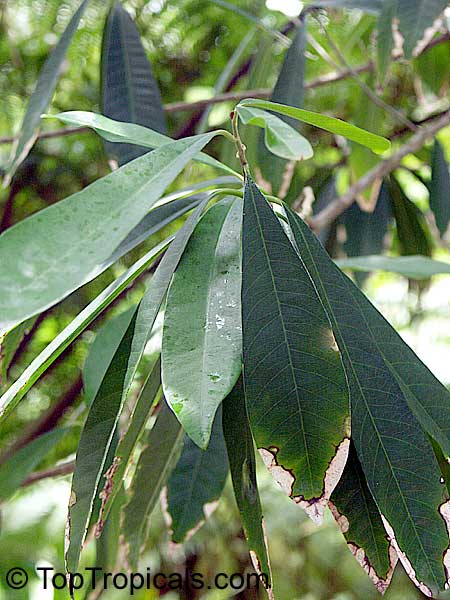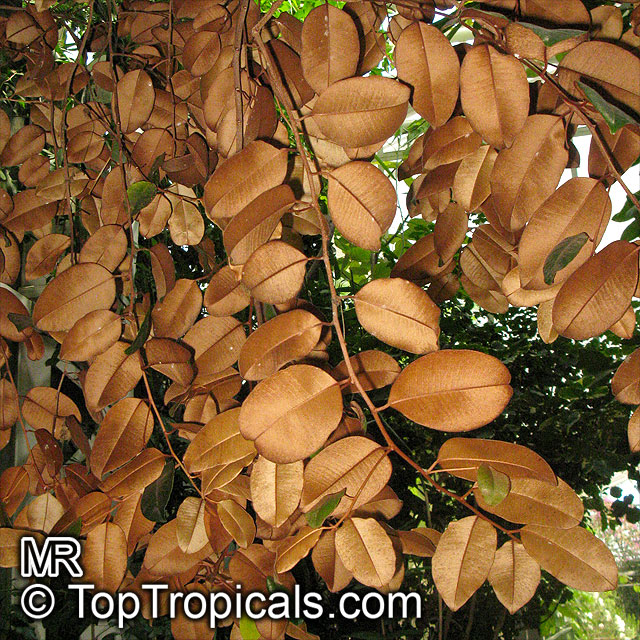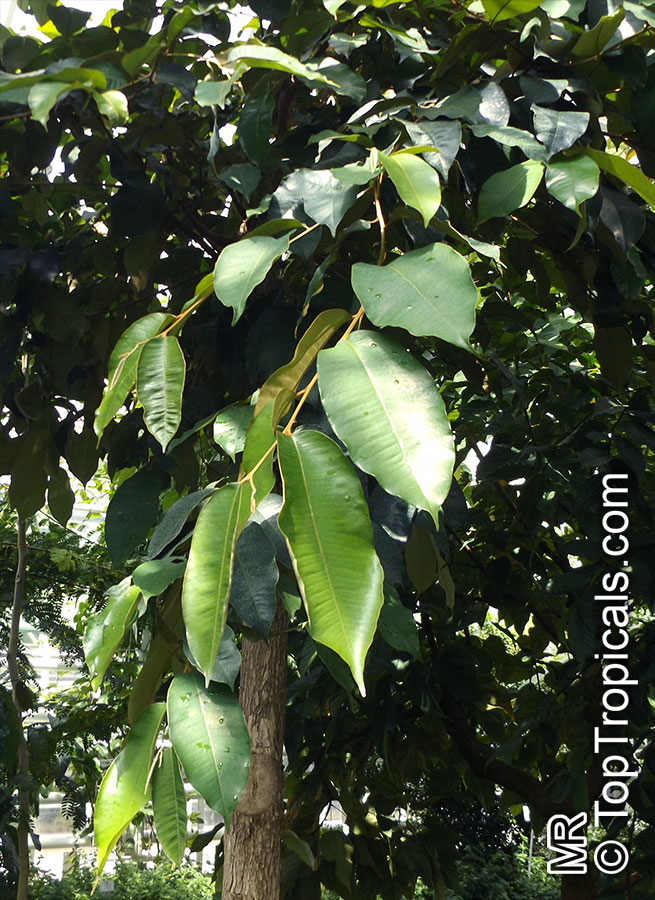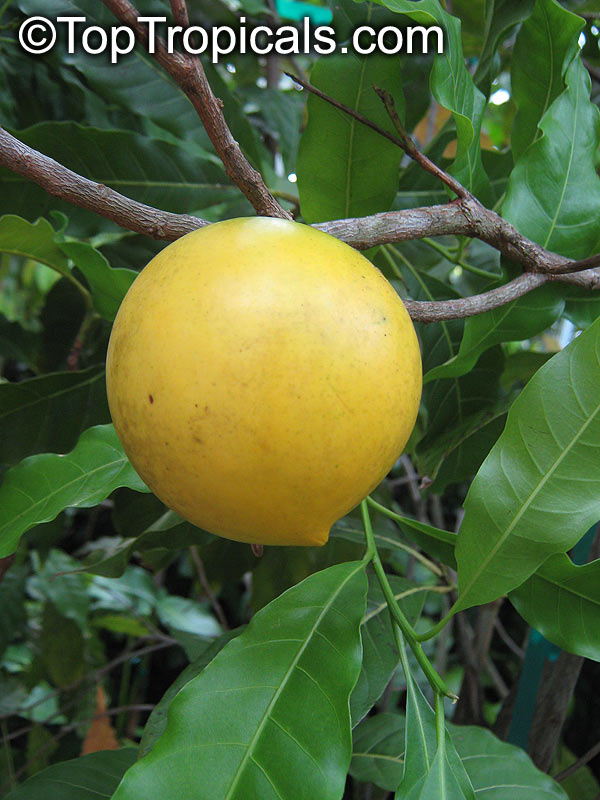Date: 26 Oct 2024
Why is it called Star Apple?
- 🍏 Caimito Star Apple (Chrysophyllum cainito) - do not confuse with Start Fruit (Carambola) - is hard to find exotic fruit tree.
- 🍏 It is a favorite in the Caribbean and Central America as well as Southeast Asia.
- 🍏 The fruit has a mild grape-like flavor, and is best eaten fresh.
- 🍏 Inside the fruit looks like a star when cut across!
🛒 Plants Caimito Star Apple
#Food_Forest
🔴 Join 👉 TopTropicals
Date: 1 Jul 2025
Starry fruit and rusty leaves: the tropical tree full of surprises
Chrysophyllum cainito - Caimito, Star Apple
❓ Is it Star Apple, Star Fruit, Cainito or Caimito? Are you lost? Don't be - and here is the truth:
- ⭐️ Don't confuse Chrysophyllum cainito (Caimito) with Pouteria caimito (Abiu), or Averrhoa carambola (Star Fruit) - which are all different fruit entirely!
- ⭐️ The Star Apple tree - Chrysophyllum cainito, also known as Caimito, is a tropical treasure admired for both its fruit and foliage. It is related to Sapote and Sapodilla and produces round, glossy fruit that comes in stunning purple and green varieties.
- ⭐️ When sliced open, the juicy flesh reveals a star-shaped pattern - hence the name "Star Apple"!
- ⭐️ The flavor is mildly sweet, often described as a mix of grape, lychee, and apple with a hint of caramel.
- ⭐️ The tree also features lush green leaves with a striking rusty-red underside, making it as beautiful as it is bountiful.
- ⭐️ Caimito thrives in warm climates and is popular in the Caribbean, Central America, and Southeast Asia.
🛒 Plant your own exotic Star Apple tree
📚 Learn more:
- ▫️ Where can I try a rare Abiu fruit and what does it taste like?
- ▫️ Why is it called Star Apple?
- ▫️Star fruit: the Star of the orchard
#Food_Forest #Nature_Wonders
🟢 Join 👉 TopTropicals
Date: 15 Nov 2024
Where can I try a rare Abiu fruit and what does it taste like?
- 🍋 Abiu tree (Pouteria caimito), or Harvest Moon Sapote - is a must-try rare tropical fruit with a striking appearance and incredible flavor.
- 🍋 About the size of a medium apple, Abiu ripens to a bright, sunny yellow that hints at the deliciousness inside. Beneath its somewhat thick, sturdy skin, which contains a bit of sticky latex when cut, lies a jelly-like, ultra-juicy flesh that's sweet, smooth, and completely acid-free.
- 🍋 Its flavor is often compared to the luscious taste of Chrysophyllum cainito (Star Apple that we mentioned earlier), making it a favorite among tropical fruit lovers.
- 🍋 Each fruit typically has one elongated seed nestled within, and Abiu is often grown from seed.
- 🍋 Abiu is very hard to find tropical fruit tree, and you won't find this fruit in supermarkets. So the only way to taste it - to grow your own!
- 🍋 With its vibrant color, unique texture, and tropical sweetness, Abiu is a fantastic choice for anyone looking to add a touch of the exotic to their rare fruit collection!
🛒 Grow your own Abiu
#Food_Forest #Nature_Wonders
🔴 Join 👉 TopTropicals
Chrysophyllum imperiale
Family:Sapotaceae
Chrysophyllum
See detailed plant profile in new window: https://toptropicals.com/catalog/uid/chrysophyllum_imperiale.htm
Chrysophyllum cainito, Achras caimito
Family:Sapotaceae
Caimito, Star Apple, Satin Leaf
Chrysophyllum cainito, or Caimito, is a beautiful, large tree which can reach heights of more than twenty feet. It is native to the West Indies, but is grown across the world in areas with tropical and subtropical climates. It can be found in the USDA Zone 10-11, and some varieties have been observed to have a cold hardiness at least to the low 30s for short periods. When planted in containers and grown in colder regions, Caimito should be taken inside during the winter. To ensure healthy growth, Caimito should be grown in full sun and require regular watering.
The fruit of the Caimito tree is edible, with a mild grape-like flavor. Not only is it delicious, but it can also be quite nutritious. Caimito is high in Vitamin C and contains several other vitamins and minerals that are important for a healthy diet.
For those looking to embrace gardening and the outdoors, Caimito is an excellent choice. Not only is it beautiful, but it is also productive. The fruit can be eaten fresh, or it can be cooked and used in jams and other applications.
See detailed plant profile in new window: https://toptropicals.com/catalog/uid/chrysophyllum_cainito.htm
Chrysophyllum gonocarpum
Family:Sapotaceae
Guatambu-De-Leite
Native to tropical America, Chrysophyllum gonocarpum is a small tree that grows to a height of 10-20 feet, making it an ideal choice to plant as a small specimen or as an ornamental tree when space is limited. It has a short trunk and a dense, round canopy.
The leaves of Chrysophyllum gonocarpum are a dull green, spirally arranged, and are 2-4 cm long and 1-1.5 cm wide. The flowers are small and white, appearing in clusters. The fruits that follow are yellow-green, subglobular and covered in grooves, resembling a miniature lime. The flesh of the fruits are fragrant and sweet.
Chrysophyllum gonocarpum enjoys full sun, with some shade in the warmer months and requires regular watering. Also known as Guatambu-De-Leite, this small tree is hardy in USDA Zones 9-11 and can flourish in coastal areas, as it is tolerant of salt spray.
For those who live in cooler regions and would like to grow Chrysophyllum gonocarpum, it can be grow in a container in a bright location indoors. When brought indoors, regular watering is key, as well as good drainage. Pruning can also be done to keep the tree in a more compact shape and to maintain a neat appearance. It is also important to keep the soil evenly moist, but not soggy, as over-watering can lead to root-rot. Another factor to consider when growing Chrysophyllum gonocarpum in a container is periodic feeding with a slow-release fertilizer.
Chrysophyllum oliviforme
Family:Sapotaceae
Satinleaf, Satin Leaf
This is a relative of Star Apple (Caimito - Chrysophyllum cainito) which is a popular fruit, well known among the people of the Caribbean. The fruit of the Satinleaf is much smaller than the Caimito, just a little dark purple berry, about an inch in diameter. Satinleaf is an ornamental medium-sized tree with a mature height of up to 30 feet and distinctive foliage: shiny olive on top, silky silvery gold underneath. You might use one in your backyard as a shade tree, an easier-to-manage alternative to live oak.
Chrysophyllum argenteum
Family:Sapotaceae
Caimito de mono, Bastard Redwood
The plant is harvested from the wild for its edible fruit, wood and medicinal uses. Edible milky fruit. Leaves very variable in shape.
Pouteria caimito
Family:Sapotaceae
Abiu, Abu, Caimito
Pouteria caimito (Abiu) is an evergreen fruit tree from the Amazon Basin, producing bright yellow fruits about the size of a medium apple.
What makes Pouteria caimito distinct?
It develops a medium sized, dense canopy, matures in three to five years, and can stay productive for more than two decades. The tree performs well in most well drained soils, does not tolerate flooding, and responds well to pruning, which helps manage height and improve early yields.
The fruit has a jelly like, very juicy, sweet and acid free pulp enclosed in a thick skin that releases sticky latex when cut. Its mild flavor resembles Chrysophyllum cainito and usually contains a single elongated seed. It grows best in full sun to light shade and prefers evenly moist, well drained soil. Warm conditions are essential, as the species is sensitive to cold and must be protected from any frost. Suitable for USDA Zones 10-11. Container culture is possible in warm climates, with winter shelter required wherever temperatures may approach unsafe lows.
See detailed plant profile in new window: https://toptropicals.com/catalog/uid/pouteria_caimito.htm
Detailed plant profiles: 6 plants found
